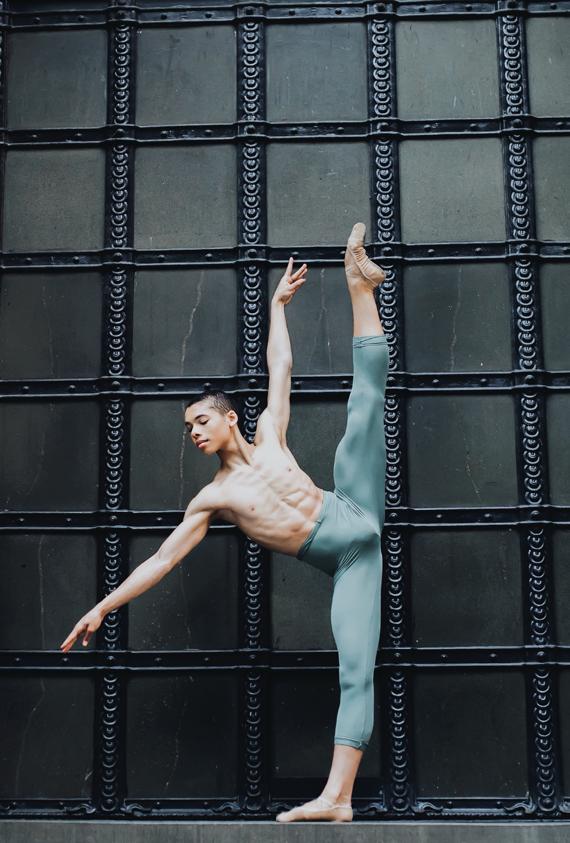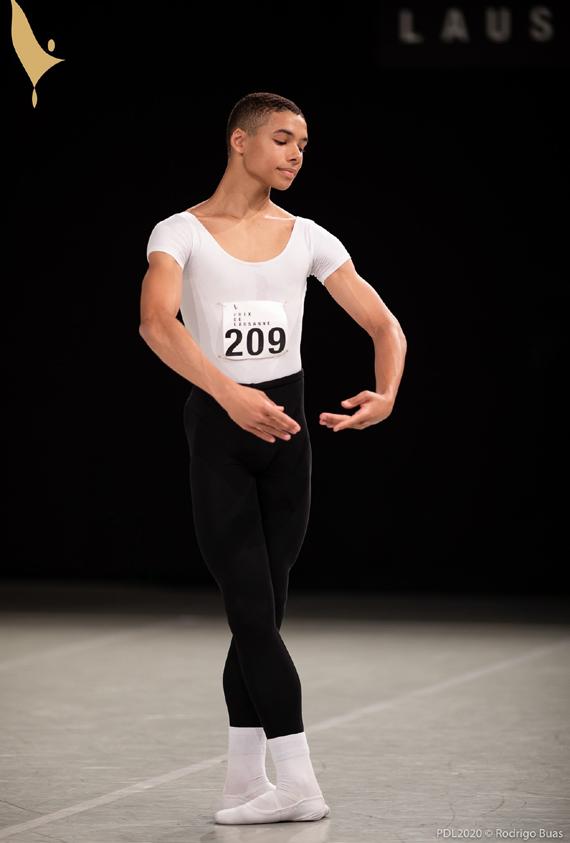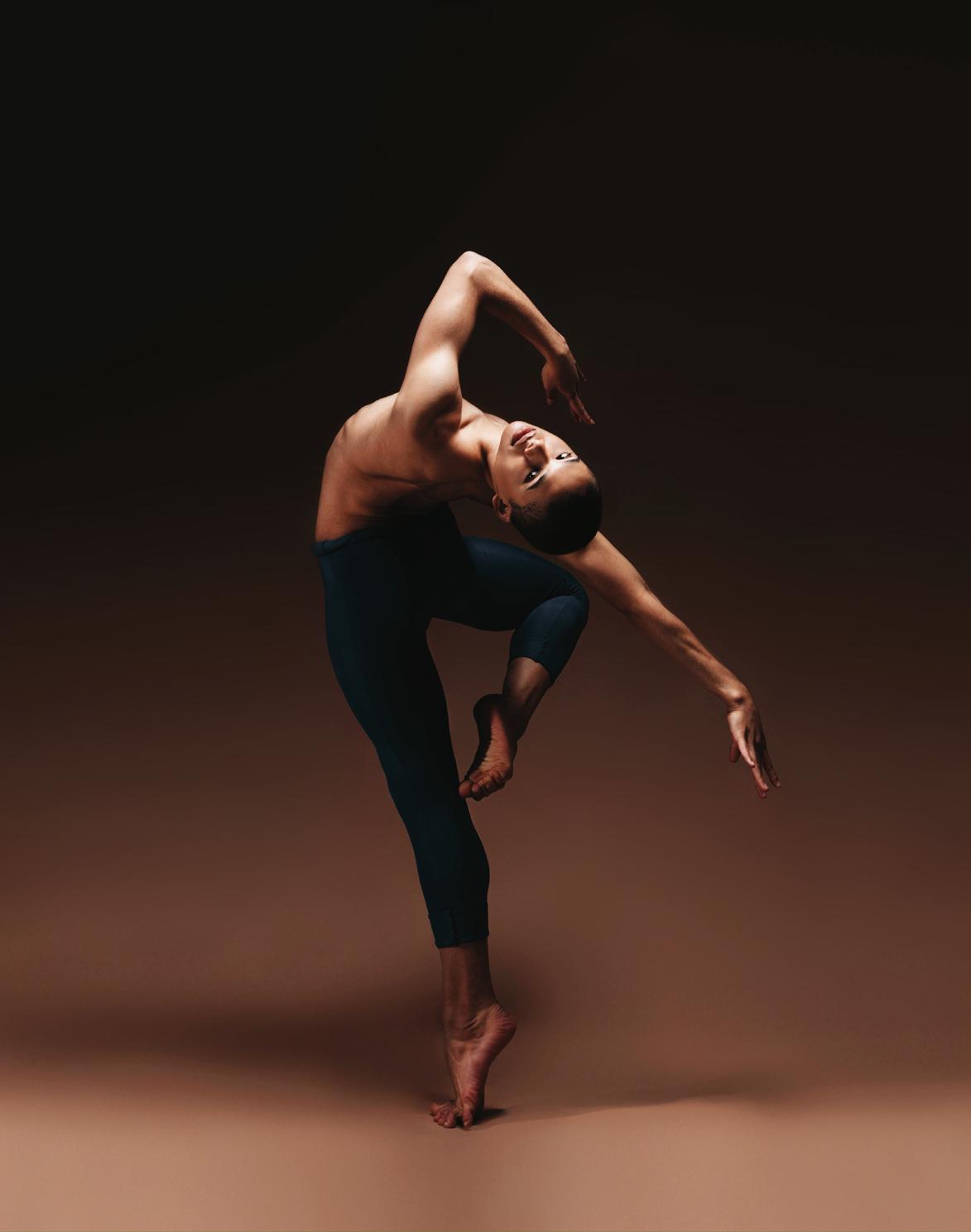
7 minute read
International Award-Winning Ballet Rising Star AUSTEN McDONALD
Story and Interview by Jasmina Siderovski
Some of the Ballet Great’s like; Rudolf Nureyev, Vaslav Nijinsky, Mikhail Baryshnikov, Roshon Fegan, Benjamin Millepied, Sergei Vladimirovich, Ivan Vasilev, Steven McRae, Tyler Nelson and more have taken the world by storm as global role models inspiring young and upcoming 21st Century male ballet dancers. In the sublime of all the costumes, scenery, music, stage design and poetry to create a dramatic storyline, originating from aristocratic influence, ballet is a formalised form of dance developed from the Italian Renaissance courts of the 15th and 16th Centuries. Ballet spread from Italy to France and founded throughout ballet stages such as the Royal Danish Ballet, Imperial Ballet of the Russian Empire, The Royal Ballet in London, the San Francisco Ballet, American Ballet Theatre, The Australian Ballet, The New York City Ballet, and The National Ballet of Canada etc.
Advertisement
In the 19th century, female ballet dancers were more popular. Ballerinas played male roles in the story. Ballet moved away from the just aristocratic audience. Some famous ballerinas experimented with a new formal element of a ballet called pointe technique. In that way, ballerina got the ideal stage figure. Boxed ballet shoes were developed and stayed as an official part of ballet code. In romantic movement, ballet choreography became free, light, airy, and ballerinas appeared as fragile beings who could be lifted effortlessly, creating the feeling of floating in the air.
In the 20th century, Russian ballet was brought back to Paris because of exile after the Revolution. In Russia, there was a stagnation on the ballet scene. The ideological pressure made socialist pieces. However, there were stunning virtuosity, technical perfection, and strength. In America, the ballet adapted to new media, television and movies. The theme somewhat dramatised than a plot. There was more freethinking than a traditional narrative. Traditional tutu was changed by bias cut to give dancer more freedom of movement. Neo-classical ballet developed a style between classical and contemporary ballet. Ballet returned to a more simplistic style, against overly dramatised form. The large sets and props were removed, allowing the dancers to become the primary artistic medium. Contemporary Ballet mixed elements of classical ballet and modern dance. It is not strictly traditional. It has use pointe technique, as well as floor work and turnin of the legs. A great influence on this genre had Mikhail Baryshnikov, Director of American Ballet Theatre in 1980.
Our up and coming era of male ballet dancers are young men rising at the International Royal Ballet level and some of the most exciting in dance right now is Australia’s very own 16-year-old, Austen McDonald. Austen recently returned as a Finalist on the World Stage at the 2020 48th Annual Prix de Lausanne held in February. The distinguished jury of the Prix de Lausanne, all professionals of the dance world, selected 84 candidates to participate in the annual prestigious ballet competition held in Montreux, Switzerland just recently.
Puredynamics Photography
were chosen for the finals at the Auditorium Stravinsky in Montreux. To attend the Prix de Lausanne is an experience of a lifetime, and those who participate walk away far more enriched than one could ever anticipate. It is a pivotal point for many and experiencing a week of classes and coaching with the world’s best teachers and choreographers, while simultaneously being assessed by jurors, streamed live and exposed to new opportunities, is beyond compare.
Austen McDonald was born In Newport Beach, California on September 29, 2003, to an American mother and Australian father. They moved to Australia in 2004. Austen enjoyed sports and started playing Rugby Union for the local community and school at five years old.
Austen celebrates a long list of achievements and awards, including:
Prix de Lausanne 2020 Finalist
Isobel Anderson Memorial Awards 2nd Overall
Sydney Eisteddfod Scholarship Finalist
Committed to his passion for dancing and expressing his gift in artistic form, Austen is admired by thousands and thousands of teenagers from around the globe. I was fortunate to interview Austen and get a little insight into what it takes to be a performer on the world stage.
When and why did you decide to become a ballet dancer?
I decided at 12 years old to leave rugby to start classical ballet, and I fell in love with it. I chose to do ballet because I was looking for an art form that was physically demanding and required the ability to act and portray a character.
Can you walk us through your journey, mainly finding the motivation to train and commit to an art that requires skill and focus?
I stay motivated by watching and studying professional ballet dancers on stage performing for an audience and enjoying
Gregory Batardon

every moment of it. I stay focused because I would also one day like to be a professional ballet dancer performing on a world-renowned stage for audiences that appreciate the art form and those just introduced where both will gain a deeper knowledge of the ballet, a personal connection, or simply experience joy from watching my performance.
What are the valuable lessons you have learned along the way in the dancing industry?
Some valuable lessons I have learned along the way in my ballet journey is that the ballet world is very tough and to survive such an intense environment you have to mature faster than the people around you because you have to commit to a full-time profession leaving your home as early as 15 years old when your counterparts are experiencing high school and self-discovery. I have also learned that hard work and dedication is the key point to success in the ballet world because although there are people in the world that a born with amazing physical attributes that ballet dancer is required to have, if they lack dedication and the drive to continue to grow they may not travel as far in their career as those who display an unwavering dedication and continued determination to grow in the art.
Everline Imagery

The advice that I would give to anyone looking at pursuing ballet as a career is that this art form is extremely challenging mentally and physically, but if you have a passion for the art form it is worth all the hard work.
Puredynamics Photography

What is your five-year plan?
My five-year plan is to move to Zurich, Switzerland in August 2020 as a full-time ballet dancer and international boarder at the Tanz Academy Zurich for the next three years and then to audition for companies around Europe and the world to start my professional career as a ballet dancer.
Who is your inspiration, and why?
My inspiration does not come from just one individual it comes from multiple dancers; this is because each ballet dancer is different, with unique backstories, body shapes, goals in life, and so much more. I am inspired by the journeys of many artists, young and old, in their pursuit of excellence in the art of dance.
What is your favourite pastime when you aren’t dancing/training?
One of my favourite pastimes, when I am not dancing, is drawing. I enjoy this because it is another great way for me to display my emotions through art.
Have your friends been supportive of your chosen art?
I am quite lucky to have very supportive parents, family, and friends when it comes to ballet. Many of my friends follow my performances and my journey through social media.
Rodrigo Buas

Does ballet affect your education at school?
Ballet does not affect my education, although it is not the traditional school experience. Most ballet dancers in training are either homeschooled or do distance education. This is because to advance your physical ability and technique requires rigorous training of at least seven hours per day, six days a week. In my case, I started dancing at the age of 12, so I had a traditional education until the age of 13 when I started full time at the ballet academy. This age was considered extremely late to start, but I was willing to work extremely hard to catch up to those who had been dancing almost all their lives which required many late nights of dance training, technique development and even later nights and weekends of academic study.
What are your end goals? Where do you see yourself ten years from now?
My long-term goal is to become a Ballet Master to continue the preservation of the art by extending the repertoire through educating future generations of ballet dancers.
Instagram: @austen.mcdonald
Congratulations, Austen your success and motivation is an inspiration for dancers everywhere. We look forward to following your journey and success.

Everline Imagery










